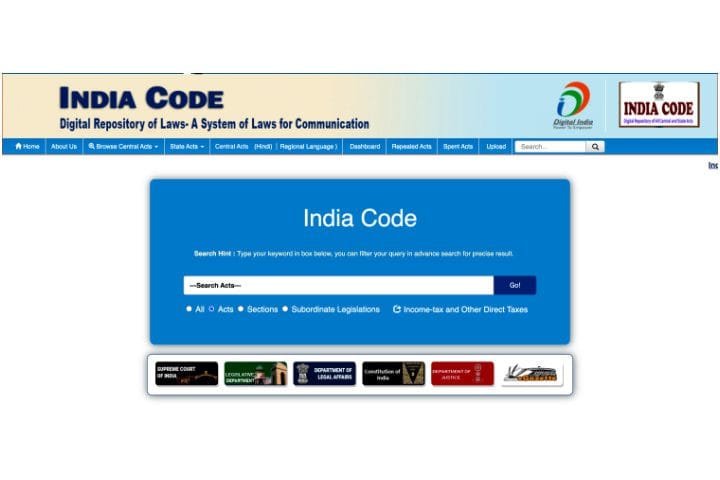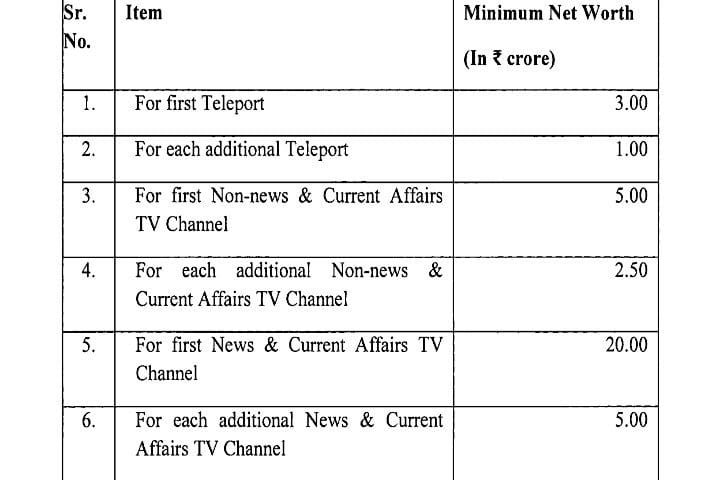Media Policy in India
Media in India is mostly self-regulated. Different regulation bodies exist for various media types, such as the Press Council of India for print, the Central Board of Film Certification (CBFC) for films, and the Cable Television Network (Regulation) Act 1995 for television. There is no CBFC certification for TV programs and serials. However, under the Cable Television Network (Regulation) Act of 1995, content codes/advertisement codes have been prescribed for programs and advertisements on cable TV networks.
For electronic news, the News Broadcasting Standards Authority, a self-regulatory organization, issues standards that are more like guidelines. Let’s discuss media policy in India in detail.
Article 19(1)(a) of the Indian Constitution allows all citizens to express their beliefs and opinions freely through speech, writing, printing, images, or other means. This provision includes the right to press freedom.
However, this right is subject to reasonable restrictions, if needed, in the interest of the security of the state, friendly relations with foreign states, public order, decency, morality, contempt of court, defamation, or incitement to an offense.
The right to information is essential to freedom of speech and expression. The Right to Information (RTI) Act of 2005 allows citizens to access information from public authorities, enhancing transparency and accountability. The RTI Act enables journalists to request and report official information previously protected by the Official Secrets Act 1923.
The government has created a digital repository of laws, which can be accessed from the India Code website.

The colonial government passed this act in an environment of mistrust in the aftermath of the non-cooperation movement and the First World War. Any information classified as “secret” comes within the ambit of this act. Moreover, as the act does not define what a “secret” or an “official secret is,” the bureaucracy, even after independence, enjoys the discretion to classify any information as “secret.”
The newspaper and television journalists have to be accredited by the Ministry of Information and Broadcasting (MIB), which acts on recommendations from the Central Press Accreditation Committee (CPAC) under the Press Information Bureau (PIB).
PIB laid the Central Newsmedia Accreditation Guidelines 2022 that put forward the eligibility criteria for journalists and media houses to gain access to government offices and events organized by the government and its agencies.
A mix of statutory laws and codes, legislation, and administrative guidelines and statutes governs the news media in India. Regulatory provisions, particularly for the infrastructure, operation, and content production, are distinct for news disseminated via newspapers and television. Infrastructure and operation of news on the internet is largely an unregulated space.
The official criminal code in the Republic of India that regulates news content on all media is the Bharatiya Nyaya Sanhita (BNS), which replaced the British era’s Indian penal code in December 2023 and took effect on 1 July 2024.
Regulation of Newspapers
Newspapers and periodicals in India required registration under the Press and Registration of Books (PRB) Act of 1867 with the Registrar of Newspapers of India (RNI) till 29 February 2024.
The Press and Registration of Periodicals (PRP) Act, 2023, and the Press and Registration of Periodicals (PRP) Rules, 2024, took effect on 1 March 2024. This legislation now governs the registration and publication of periodicals, including newspapers, and the notification process for printing presses. Additionally, the PRB Act of 1867 will be repealed upon implementing the PRP Act.

The PRP Act establishes the role of the Press Registrar General of India to fulfill its objectives. The Press Registrar appointed under the PRB Act has assumed the position of Press Registrar General. The office of the Registrar of Newspapers of India (RNI) is now called the Office of the Press Registrar General of India (PRGI). PRGI also determines if a newspaper organization can own a particular title.
The ‘Press Sewa Portal‘ is the online portal developed by the Press Registrar General for receiving various applications, intimations, and documents required under the PRP Act and Rules. Certificates of registration of periodicals are also issued on the portal.
Stakeholders such as owners, printers, and publishers can register on the portal, create profiles, and request services offered through it.
Regulation of cable news
Cable and satellite channels require a license to operate, unlike newspapers. Such licenses are granted in two categories:
- News & Current Affairs
- Non-news & Current Affairs TV channels
News and Current Affairs channels in India must obtain an uplinking permit from the MIB, as outlined in the Policy Guidelines for Uplinking of Television Channels. This requirement was first established in 2000 and has been amended several times, with the most recent update in 2022.
Guidelines for Uplinking and Downhinking of Satellite Television Channels in India:

This permission is granted for 10 years (which can be renewed) after security clearances from the Ministry of Home Affairs and the Department of Space. These television guidelines also impose a foreign investment cap of 49% on news channels.
Regulation of News on Public Broadcasting
News is disseminated via Doordarshan, and the television wing of Prasar Bharati (the Public Service Broadcaster of India) is regulated by the Guidelines for Sponsored Programs. All India Radio regulates the content of radio broadcasts according to the AIR Code.
AIR Broadcast Code
- Criticism of friendly countries.
- Attack on religion or communities.
- Anything obscene or defamatory.
- Incitement to violence or anything against the maintenance of law and order.
- Anything amounting to contempt of court.
- Aspersion against the integrity of the president, governors, and judiciary.
- Attack on a political party by name.
- Hostile criticism of any state or the Centre.
- Anything disrespecting the constitution or advocating change in the constitution by violent means (but advocating changes constitutionally should not be debarred).
Regulation of News on Radio
Private FM radio and community radio cannot broadcast news due to a clause in their Grant of Permission. As of 2019, the MIB permits private FM radio channels to rebroadcast unmodified news bulletins from All India Radio (AIR). A license fee for news carriage applies according to the service provider’s category or rating.
Regulation of Online News

Unlike newspapers and cable news channels, online news outlets do not need registration or licensing. There are no eligibility requirements for starting a news website. However, the central government has tried to formalize a code of conduct for online news providers in line with the existing newspapers and cable news provisions.
The Reserve Bank of India (RBI) requested Newslaundry.com, an online news website, to seek foreign direct investment (FDI) approval when it aimed to sell a stake in the company abroad. Online news media do not require such approval; it is only necessary for traditional media.
Unlike cable television, no legal distinction is made between news and non-news content online. Both are governed by the Information Technology Act of 2000 or the IT Act, which initially addressed cybercrime and e-commerce. An amendment in 2008 expanded its scope to include data protection.
The Act allows the government to intercept, monitor, or decrypt online information, remove web pages, and block content, including that on online news portals. Internet sites, including news sites, are governed by the Temporary Suspension of Telecom Services (Public Emergency or Public Safety) Rules of 2017, permitting the suspension of internet services during national emergencies. The rules are consistent with the Indian Telegraph Act established in 1885.
Efforts to implement and expand regulations for online news, similar to those for offline news, have caused concern among journalists and civil society. More than 100 journalists from online portals raised concerns in a letter to the MIB regarding potential risks from applying old rules and regulations to the internet. They emphasized that new regulations are unnecessary since the IT Act and Penal Code regulate online news content.
Broadcasting Services (Regulation) Bill, 2024 (Draft)

The Ministry of Information and Broadcasting drafted the Broadcasting Services (Regulation) Bill 2024, which aimed to replace the Television Network Act 1995. The bill intends to classify influencers and social media pages that create content or discuss current affairs or news online as ‘digital news broadcasters.’
The draft bill shared with stakeholders in November 2023 expands its scope to cover social media accounts, online video creators, and over-the-top (OTT) content and digital news. The updated version defines ‘digital news broadcaster’ and mandates government registration and content evaluation standards.
The bill updates the definitions of ‘programme’ and ‘broadcasting’ to include textual content, ensuring it includes all online news-related content. A chartered accountant giving financial advice on YouTube or a journalist posting updates on Twitter may be subject to this regulatory framework. The updates ensure the legislation aligns with the changing digital media landscape.
The bill expands the definition of ‘intermediary’ to include internet service providers, social media platforms, online search engines, and marketplaces. Intermediaries must provide the central government data on OTT and digital news broadcasters. Failure to comply may lead to fines and the removal of safe harbor protections as specified in the Bharatiya Nyaya Sanhita, 2023.
The bill introduced regulations for online advertising, creating a new category of ‘advertising intermediaries’ to oversee ad space on digital platforms. The bill addresses regulating sponsored posts by influencers, which is already included in the Consumer Protection Act of 2019.
Sector-wise Investment Limits in Media
India’s foreign investment policies across various media and broadcasting sectors, regulated by the Ministry of Information and Broadcasting:
Film and Advertising
The automatic route permits FDI up to 100% with no additional conditions.
Print Media
Two main categories exist:
- Scientific/Technical Publications: FDI allowed up to 74% for magazines, periodicals, and journals.
- News and Current Affairs: FDI permitted up to 26% with specific safeguards, including Indian editorial control and management.
Broadcasting
The sector has specific regulations:
- Indian companies must maintain 80% Indian shareholding and Indian management control to uplink from India.
- No restrictions exist on foreign equity for software production, TV rights, and advertisements.
- Private FM broadcasting does not allow foreign equity.
- Cable network companies must maintain at least 51% Indian citizen ownership.
Foreign News Agencies
Operations of foreign news agencies in India are governed by a 1956 Cabinet Decision, requiring:
- Distribution of news through Indian news agencies
- Indian ownership and management of the distributing agency
- Authority over foreign news selection resides with Indian agencies.
- Financial news distribution is permitted directly to selected clients for personal use only.




